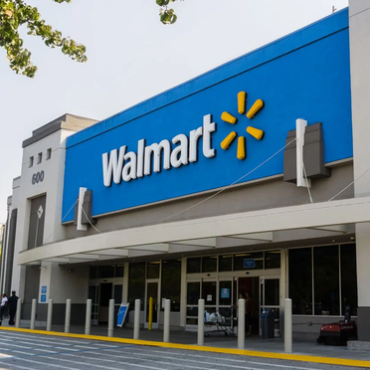Logistics and Supply Chain Management

Logistics and Supply Chain Management at Jebsen & Jessen (SEA) Ltd
The purpose of this paper is to present to discuss the effectiveness of the main flows in the logistics and supply chain management, the make process and forecasting of the supply chain in Jebsen & Jessen (SEA) Ltd. This includes the effectiveness in information flow, product or material flow, cash flow and the return flow in the company distribution. The report also analyses the effectiveness of the process of material planning and production planning, and a review of the different models of forecasting. The report then contain recommendations for the improvement of the logistics and supply chain management and best model of forecasting for the company.
Overview of the Company’s Logistics and Supply Chain Management
Jebsen & Jessen (SEA) ltd. is a manufacturing and engineering company that also deals with logistics and supply chain management on the distribution of products and has its headquarters in Singapore and has operations in the regional areas of the ASEAN countries. It was incorporated in Malaysia and Singapore in the year 1963. It manufactures imported technology cables and tailor it to the need of the market, design and make equipment that are used in industries such as extraction of edible oil , oil refining , modification of fats , Biodiesel and Oleo chemicals (Jebsen & Jenssen ,2011). Writers who offer strategic management assignment help at Edudorm essay writing service notes that the company’s objective is to always design solutions for logistics and supply chain management that ensure optimization of resource utilization, creation of efficient processes that will consider effect of the plant on environment and people. The goal of the company is to be the leader in provision of high quality products in and services whose dedication is to fulfil its customer needs while maintaining professionalism and integrity (Anthea, 2011). The primary market for the company is the South East Asia, where it also has 40 subsidiaries that are based in Malaysia, Indonesia, Thailand, Philippines and Vietnam. The firm’s main competitors include Samsung Total Petrochemicals, Mitsubishi, and Bourage. The firm aims at maintaining a growth sustaining level of profitability that also ensures adequate return to its shareholders.
Efficiency in Logistics and Supply Chain Management for information, product, cash and return flows
The logistics and supply chain management involve the oversight of information, products and finances and any return to a manufacturer, as these aspects move in a certain process from the manufacturer to the customers. The process involves the integration and coordination of these flows within the organisation and among other organisations (Taylor, 1997). The ultimate goal of the logistics and supply chain management of Jebsen & Jessen Company is to achieve effectiveness in minimizing the inventory since the products are availed while needed. Product flow consist of movement of various goods to the customer which must involve the various distribution channels such as retailers and wholesalers, or delivering direct to the client or service need or customer returns (Eyob,& Tetteh, 2012). The flow of information involves transmitting various orders and keeping an update of delivery status. The flow of finances involve payment schedules, credit terms, and title and consignment ownership (Sweeney, 2006). The Jebsen & Jessen Company distribute life science and chemical ingredients for many manufacturing and industrial application. Experts who offer MBA assignment help at Edudorm essay writing service indicates that the logistics and supply chain management is that the company’s 300 customer service and sales staff help in the connection of technology for over 100 suppliers who are also the company’s partners to the many customer’s across the ASEAN market. The process also update the partners and customers continuously with market trends and intelligence. The distribution network, ensures that the customers are provided with products in the demanded quantity and size, while assortment is done in due time and in defined place and thus ensuring low cost in the process. Each locational change of finished products or change in related information in this logistic chain connected with managing handles on space and time (Ramachandra,2010).
The company’s flow is enabled by regionally integrated and locally present distribution partner who are assisted by technical sales in the region and a well-defined distribution network that covers the whole of South East Asia. This helps the company to supply more than 100,000 tonnes of industrial chemicals and ingredients and other many other large appliances in the regions it covers. The network is necessitated by the flow of information about the orders needed by the customers back into the manufacturing units especially for the technological appliances and plants. The company is thus able to design them to meet the customer need in time. Such flow enables the company to provide shorter lead times and attractive terms of credit. Authors who offer operations management assignment help at Edudorm essay writing service points that the flows are very effective since the company utilizes the SAP infrastructure in provision of real-time data which keeps the logistics and supply chain management responsive and thus provide high valued insights to customers. An organization should focus on implementing a supply chain strategy of management that will ensure that its operations will remain effective under a competitive market conditions (Sweeney, 2006). Jebsen & Jessen company observes this by focusing on the returns from customers which are mostly related to need for extend services such installation of plants.
To further improve the logistics and supply chain management, I recommend that the company employ the process of optimising the EBITDA (Earnings before interest, taxes, depreciation and amortization) process. The process ensures the maximisation of cash flow through redesigning of information, developing better forecasts through proper systems of inventory management, enhancing instructions on product use and apply optimal just-in-sequences model to focus on demand. All these will play a big role in variable cost reduction.
Production Planning/Scheduling Process and Materials Requirement Planning Process
Logistics and supply chain management is an integrated and flexible network of manufacturers, distributors and suppliers and process through which raw materials are obtained, processed to add value and delivered as finished products to customers (Basu & Wright, 2010). In order for Jebsen & Jessen Company to achieve optimum performance, its functions of logistics and supply chain management must be integrated. Mentors who offer corporate strategy assignment help at Edudorm essay writing service recognizes that production planning for logistics and supply chain management is a process that has a main goal of maintaining the flow in the manufacturing process and it covers all the aspects of operations from the activities of the workforce to the delivery or distribution of the products. Material requirements planning refers to a production planning and inventory control system that is normally adopted in the manufacturing process and it aims at ensuring that materials necessary for productions are available and products are delivered or distributed to the customers (Basu & Wright, 2010).
In the logistics and supply chain management, Jebsen & Jessen is the main leader in the East South Asia region, any fault in the production planning process and material requirements can have a negative impact on its distribution system which will give its competitors an upper hand. The company’s material planning system acts as the major driver and source of information for more planning of material requirements and production schedules. The company’s system of material requirement process is normally time phased and ensures priority planning and its effectiveness stems from application of information technology in calculating the materials required. Instructors who offer strategic marketing assignment help at Edudorm essay writing service argues that it also schedules the supply of products in order to meet demand in the manufacturing plants and across all the products. Information technology is very important component that assist in designing and implementation of the process and systems for material requirement planning since it provides relevant information about the needs for manufacturing (Kallrath & Maindl, 2006). These needs are closely linked with customer demands and thus the need for the systems and process to provide adequate information about the inventory levels. In logistics and supply chain management, the company deals with a wide range of products and due to its large market it replenishes its inventory quite often per each year of operations and thus the planning process uses the information on inventory to determine the material to be ordered and at what time. The process of material planning assist the company production planning since the manufacturing process of plants involves a combination of various parts into a single product which is then stocked to meet the demand of the customer.
I therefore recommend that these process should be operated with inclusion of an information system that will ensure that there are adequate control methods. These control methods are important because the logistics and supply chain management is a process that encounters a lot of uncertainties which are inherent in the internal process but more so in the external distribution efforts (Kerber, & Dreckshage, 2016). The information system will ensure the flow of information is smooth so that in the end, the production planning process and material requirement planning process will be integrated fully (Ross, 2016). Furthermore, if both planning processes are integrated with an advance information system at the operational level, an intra- organization focus may be achieved since Jebsen & Jessen has many subsidiaries that need the same high notch distribution process.
Forecasting Models for in Logistics and Supply Chain Management
There are two types of forecasting models that can be used in the logistics and supply chain management which include the qualitative and qualitative forecasting methods. The methods of qualitative forecasting are basically subjective since they rely on human experience and expertise and related judgement. These forecasting methods are appropriate mostly when there is availability of little historical data as applies in forecasting of demand for new commodities or sales estimation (Shah, 2009). Teachers who offer business development assignment help at Edudorm essay writing service says that the models uses various subjective inputs such as the executive opinions, consumer surveys, opinion from the outsiders, estimations of the sale force or the opinion from the staffs and their managers. The qualitative models include the market research, Delphi, judgmental and the analogy of the life cycle .The judgements method involve opinions of the various individuals which are induced and feedback is controlled to achieve a consensus. The forecasts are then encoded using the determined parameters which are systematically updated as sales data more so about new products is availed. (Tayur, Ganeshan & Magazine, 1999). The Delphi model use the expert’s opinions to forecast on demand where an expert makes prediction on the basis of available data relating to logistics and supply chain management. Market research consist of estimation of the market size on the base of new ideas or products of a few selected clients. The analogy of the life cycle involve introducing the product, growth of market, maturity through to its decline. A diffusion model can be used basing it on past experience of similar products and market size and then estimate a product’s life cycle distribution demand (Datta, Granger, Graham, Sagar, Doody & Slone 2008).
Quantitative forecasting involves the model of time series that utilizes historical data and make an assumption that the future will resemble the past and the causal model that portrays what causes the demand and how the cause relates to other variables (Murty, 20060. Trainers who offer consumer behavior assignment help at Edudorm essay writing service states that even in the application of the best model of forecasting some part of demand will not be forecasted and the forecasting model will be judged by predicting the extent to which it can predict the future demand. I therefore recommend that Jebsen & Jessen Company should use times series model to forecast in logistics and supply chain management since it is can be useful in identification of seasonal variations which will in turn help in in the planning process at various times of the year. Though complicated it is quite accurate over the short run (Murty, 2006). This is possible in the Asian market that is stable. The model also includes various market variables in estimations.
Conclusion
An effective flow of information, products and cash flow in logistics and supply chain management plays a big role in minimization of inventories of materials and finished products, the reduction of space required for the purpose of logistics issues and thus optimization of the whole logistics process. An integrated logistics and supply chain management process ensures that material requirement and production process planning that utilizes an information technology system enables the company to maintain an effective flow of all the elements of logistics and supply chain management. The information system ensures a smooth information flow which is the mainstay in the supply management since all other aspects of depend on how well the information is shared between the company, supply partners and thus satisfaction of customers’ needs is achieved. The choice of an effective forecasting model will ensure that the processes of production planning and material requirement planning are optimized to reduce on any shortage in material requirement, excess inventory in the warehouses and timely delivery of finished products is made to customers. This has a final effect of minimizing cost and maximizing on profits in a competitively changing market. These observations align with objectives of Jebsen & Jessen Company which aims at ensuring optimization of resource utilization and its overall goal of being the leader in provision of high quality products.
References
Jebsen & Jessen (2011). About us.
Anthea, H. (2011). JJ-Muntons is ready for Business.
Ramachandra, M. (2010). Web-based supply chain management and digital signal processing: Methods for effective information administration and transmission. Hershey, PA: Business Science Reference.11-12
Sweeney, E. (2006). Managing Information Flows: the Key to Effective Supply Chain Integration. Logistics Solutions, the Journal of the National Institute for Transport and Logistics, Vol. 9, No. 3, pp. 18-21,
Taylor, D. H. (1997). Global cases in logistics and supply chain management. London [u.a.: Thomson.
Eyob, E., & Tetteh, E. (2012). Customer-oriented global supply chains: Concepts for effective management. Hershey, PA: Information Science Reference.79
Ross, D. (2016). Introduction to e-Supply Chain Management: Engaging Technology to Build Market-Winning Business Partnerships. CRC Press. 2011
Kallrath, J., & Maindl, T. I. (2006). Real optimization with SAP APO. Berlin: Springer.6-7
Basu, J. Wright, N. (2010). Total Supply Chain Management. Routledge.317.
Kerber, B. Dreckshage, B. (2016). Lean Supply Chain Management Essentials: A Framework for Materials Managers. CRC Press. 58.
Tayur, S., Ganeshan, R., & Magazine, M. (1999). Quantitative models for supply chain management. New York: Springer Science.419-425
Shah, J. (2009). Supply chain management: Text and cases. Upper Saddle River, N.J: Pearson Education. 173
Eastham, J. Sharples, L., Ball, S. (2007). Food Supply Chain Management. Routledge.162-164.
Datta, S. Granger, C., Graham, D., Sagar, N., Doody, P., Slone R., (2008). Forecasting and Risk Analysis in Supply Chain Management.
Murty, K. (2006). Forecasting for Supply Chain and Portfolio Management.


